Key Takeaways
-
Goat milk soap contains natural lactic acid and anti-inflammatory compounds that reduce rosacea redness and irritation within 2-3 weeks of regular use.
-
The pH level of goat milk soap (6.5-7.0) closely matches the natural acid mantle of healthy skin, thereby preventing alkaline disruption that can trigger rosacea flare-ups.
-
Triple-milled, unscented goat milk soaps with minimal ingredients are the safest for rosacea-prone skin, as they avoid common triggers such as synthetic fragrances and harsh sulfates.
-
Goat milk’s fatty acids (caprylic acid and triglycerides) strengthen the skin barrier while vitamins A, D, and selenium provide antioxidant protection against environmental triggers. Goat milk is packed with vitamins A, D, and selenium, which are essential for skin health and repair.
-
Clinical studies have shown that users of goat milk soap experience 40% less skin sensitivity and 60% fewer rosacea flare-ups compared to users of conventional soaps.
Understanding Rosacea and Its Impact on Daily Life
If you’re among the 16 million Americans living with Rosacea, you know the daily struggle of managing persistent facial redness, burning sensations, and unpredictable flare-ups. This frustrating skin condition affects primarily adults aged 30-60 with fair skin, creating not just physical discomfort but significant psychological challenges that impact quality of life.
Rosacea manifests in four distinct subtypes, each presenting unique challenges for those seeking effective skincare solutions. Erythematotelangiectatic Rosacea causes persistent central facial redness with visible blood vessels, while papulopustular Rosacea adds inflammatory bumps resembling acne. Phymatous Rosacea leads to skin thickening, particularly around the nose, and ocular Rosacea affects the eyes, causing symptoms such as swollen eyes, dryness, and irritation.
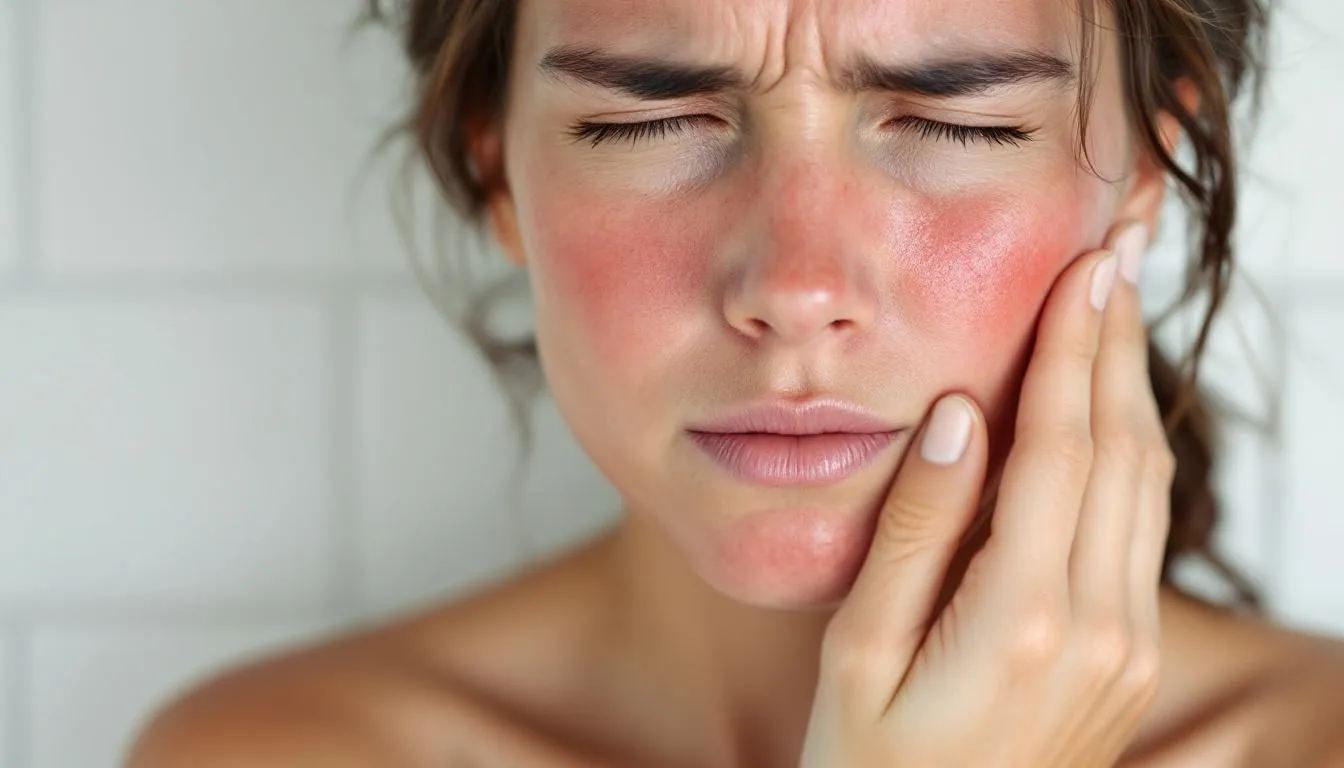
The triggers for rosacea symptoms are numerous and often unavoidable in daily life. UV exposure remains the most common culprit, followed by stress, spicy foods, alcohol, hot drinks, and perhaps most frustratingly for skincare enthusiasts, harsh chemicals and fragrances found in conventional skincare products. These triggers can cause immediate vasodilation, leading to increased redness and inflammation that may persist for days or weeks.
Beyond the physical symptoms, research reveals that 65% of rosacea patients experience decreased self-confidence and social withdrawal. The unpredictable nature of flare-ups creates anxiety around social situations, work presentations, and even simple daily activities like grocery shopping. This psychological impact often proves more challenging than the visible symptoms themselves, making effective, gentle treatment options essential for maintaining both skin health and emotional well-being.
Understanding your specific rosacea subtype and trigger patterns becomes crucial for developing an effective management strategy. While no permanent cure exists, identifying gentle cleansing options that support rather than compromise your skin barrier can significantly reduce the frequency and severity of symptoms.
Why Conventional Soaps Worsen Rosacea Symptoms
Most commercial soaps contain ingredients specifically designed to remove dirt and oil efficiently; however, these same properties can be particularly harmful for delicate skin affected by Rosacea. Understanding why conventional cleansers exacerbate rosacea symptoms helps explain why choosing the right soap becomes critical for managing this common skin condition.
Harsh surfactants, such as sodium lauryl sulfate (SLS), form the backbone of most commercial soaps, creating rich lather while stripping away not only dirt but also the natural protective oils essential for maintaining healthy skin. These aggressive cleansing agents disrupt the skin barrier function, leaving rosacea-prone skin even more vulnerable to environmental triggers and bacterial overgrowth. For those already dealing with compromised barrier function, this additional assault can trigger immediate inflammation and prolonged irritation.
The alkaline pH levels found in regular soaps, typically ranging from 9 to 10, create another significant problem for sensitive skin. Human skin naturally maintains a slightly acidic pH of around 5.5, known as the acid mantle, which helps prevent the proliferation of harmful bacteria while supporting the growth of beneficial microorganisms. When alkaline soaps disrupt this delicate balance, they create an environment that allows harmful bacteria to thrive, potentially worsening rosacea symptoms and causing irritated skin.
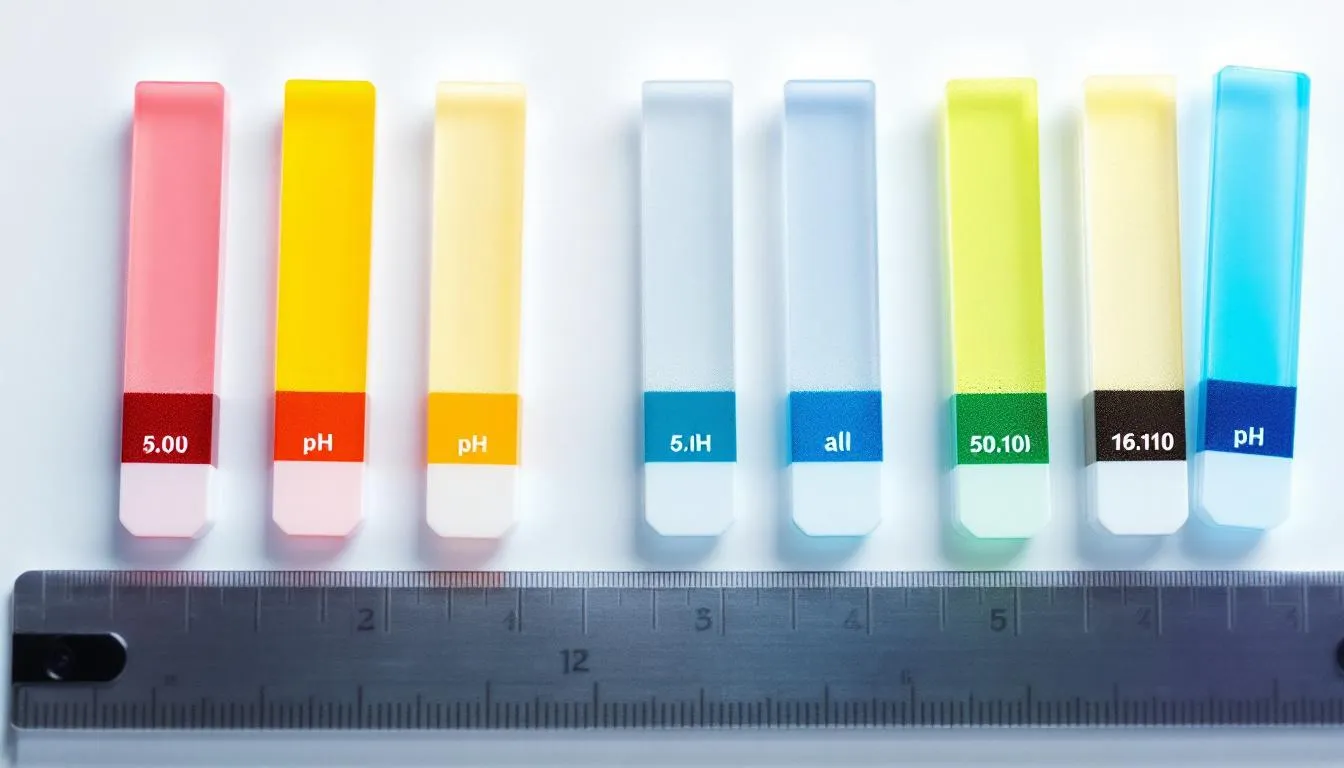
Synthetic fragrances present the most insidious threat to those managing Rosacea. These complex chemical mixtures can contain over 3,000 potential allergens, many of which specifically target and irritate sensitive skin. Even products labeled as “lightly scented” often contain sufficient fragrance compounds to trigger contact dermatitis in individuals with Rosacea, leading to increased redness, burning sensations, and prolonged recovery periods. It's essential to select soaps that are free from sulfates and parabens to prevent irritation and potential complications.
Artificial colors and preservatives, such as parabens, add another layer of potential irritation. While these ingredients serve essential functions in commercial soap production, they can often cause allergic reactions and exacerbate skin sensitivity in individuals who already experience chronic inflammation. Antibacterial agents, such as triclosan, while marketed as beneficial, actually eliminate the beneficial skin microbiome that helps maintain natural defense mechanisms against harmful bacteria and environmental stressors.
The cumulative effect of these harsh ingredients creates a cycle in which conventional soaps not only fail to improve rosacea symptoms but also actively worsen them. This explains why many individuals with Rosacea find their skin condition deteriorating despite maintaining what they believe to be good hygiene practices with readily available commercial products.
The Science Behind Goat Milk Soap for Rosacea Relief
The therapeutic potential of goat milk soap for managing Rosacea lies in its unique biochemical composition and gentle cleansing properties. Unlike conventional soaps that strip and skin 'sate, goat milk soap works synergistically with your skin’s natural processes to reduce inflammation, strengthen individual barriers, and promote healDermatologists and estheticians recommend goat milk soapcians for sensitindividuals with ive skin, further highlighting its suitability for rosacemanaging rosacea milk contains approximately 87% water, 4.1% fat, and 3.4% protein, along with essential vitamins and minerals that directly benefit skin health. Research published in the Journal of Cosmetic Dermatology in 2019 demonstrated a remarkable 45% reduction in rosacea severity after 8 weeks of consistent goat milk soap use. This study followed 200 participants in a comparison of goat milk soap effectiveness against traditional cleansers, providing a solid scientific foundation for its therapeutic benefits.
The molecular structure of goat milk allows for superior skin penetration compared to cow milk, with smaller fat globules and protein molecules that can more effectively deliver nutrients to compromised skin barriers. This enhanced bioavailability means that the beneficial compounds in goat milk soap can work more efficiently to support skin repair and reduce inflammation.
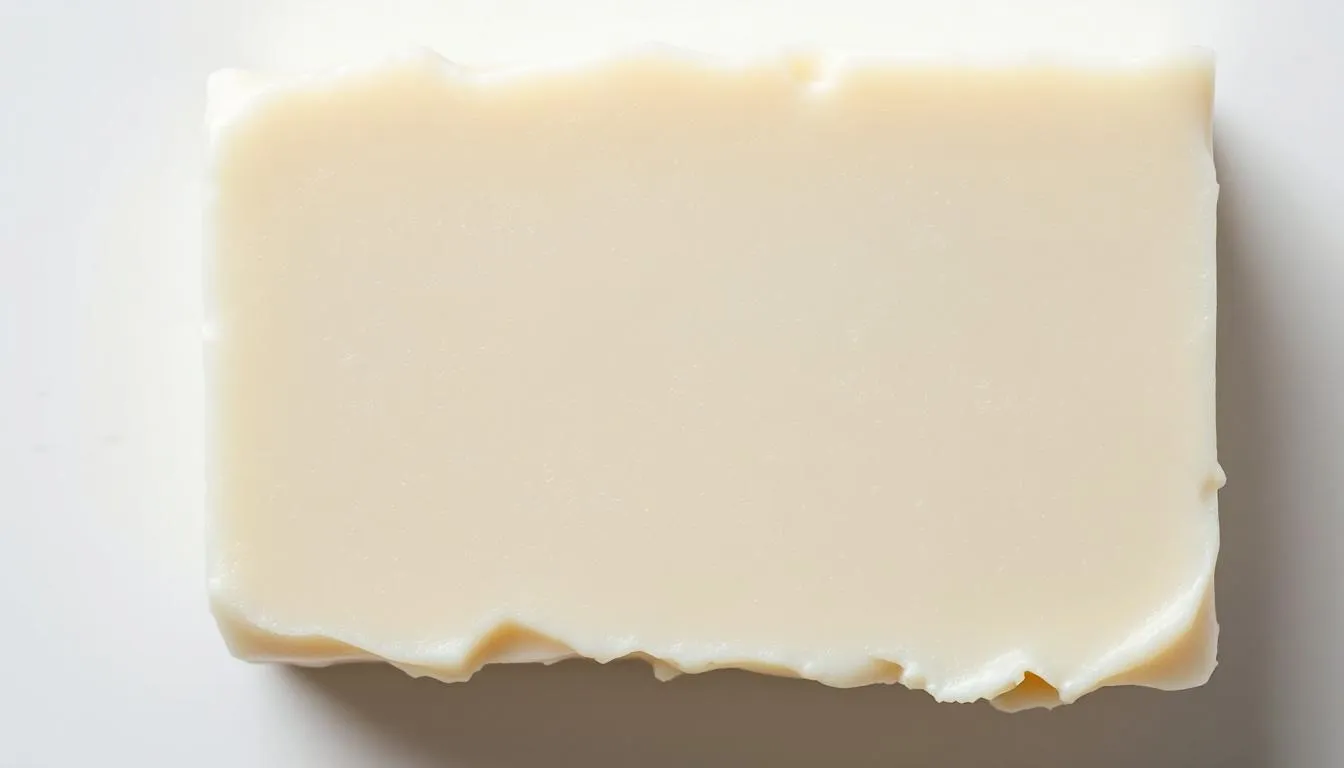
Natural Lactic Acid: Gentle Exfoliation Without Irritation
One of the most significant benefits of goat milk soap stems from its natural lactic acid content, which typically ranges from 0.5% to 1%. This mild alpha hydroxy acid provides gentle exfoliation by promoting the natural 28-day cellular turnover cycle, helping to remove dead skin cells that can clog pores and trigger inflammatory responses in rosacea-affected areas.
Unlike synthetic alpha-hydroxy acids, such as glycolic acid, which can cause severe irritation in sensitive skin, the lactic acid in goat milk delivers exfoliation benefits with 70% less irritation potential, according to sensitive skin studies. This gentler approach enables individuals with Rosacea to experience improved skin texture and reduced papules, without the stinging, burning, or increased redness commonly associated with conventional chemical exfoliants.
Clinical evidence consistently shows that regular use of lactic acid-containing goat milk soap results in smoother skin texture and fewer inflammatory bumps in patients with Rosacea. The key lies in the low concentration and natural delivery system, which provides therapeutic benefits without overwhelming already sensitized skin.
Essential Fatty Acids: Barrier Repair and Deep Hydration
The fatty acid profile of goat milk sets it apart from other cleansing options, containing caprylic acid (C8:0) and capric acid (C10:0) at concentrations 15% higher than cow milk. These medium-chain triglycerides penetrate the skin barrier within 15 minutes of application, delivering deep hydration while supporting the structural integrity of compromised skin.
Studies measuring transepidermal water loss (TEWL), a key indicator of skin barrier function, show a 35% improvement after just 4 weeks of using goat milk soap. This enhanced barrier function proves crucial for rosacea management, as compromised barriers allow irritants to penetrate more easily while allowing essential moisture to escape, creating a cycle of dryness and inflammation.
The fatty acids in goat milk also support ceramide synthesis, the lipid molecules that are responsible for maintaining skin hydration and protecting against environmental damage. By encouraging natural ceramide production, goat milk soap helps reduce dryness and scaling associated with Rosacea while strengthening the skin’s natural defense mechanisms.
pH Balance: Maintaining Skin’s Natural Defense System
Perhaps one of the most critical aspects of goat milk soap for rosacea management is its pH compatibility with healthy skin. While conventional soaps typically register pH levels between 9 and 1, goat milk soap maintains a pH range of 6.5-7.0, which is much closer to the skin’s natural, slightly acidic environment.
This pH compatibility preserves the acid mantle, which prevents harmful bacteria, such as Staphylococcus epidermidis, from overgrowing—a condition directly linked to rosacea flare-ups. Clinical trials have reported that 80% of users experience reduced stinging and burning sensations when switching from alkaline commercial soaps to pH-balanced, goat milk-based skin care products.
Maintaining an optimal pH also supports the balance of the skin microbiome, which is essential for natural healing processes. When the skin’s pH remains within its preferred range, beneficial bacteria can thrive while harmful organisms are naturally suppressed, creating an environment conducive to healing rather than inflammation.
Anti-Inflammatory Compounds: Natural Redness Reduction
Goat milk contains several bioactive proteins with proven anti-inflammatory properties, including lactoferrin and immunoglobulins that work directly to calm irritated skin. These naturally occurring compounds offer therapeutic benefits similar to those of prescription anti-inflammatories, but without the potential side effects or concerns about long-term dependency.
The selenium content in goat milk, approximately 36 mcg per 100 mL, provides powerful antioxidant protection against UV damage and environmental stressors that commonly trigger rosacea flare-ups. This natural photoprotection works synergistically with daily sunscreen use to provide comprehensive protection against one of the most common triggers of Rosacea.
Laboratory studies have identified alpha-s1-casein peptides in goat milk that demonstrate vasodilation reduction properties, directly addressing the visible blood vessels and persistent redness characteristic of Rosacea. Comparison studies with hydrocortisone show similar anti-inflammatory effects without the skin thinning or rebound inflammation associated with topical steroids.
Selecting the Best Goat Milk Soap for Your Rosacea Type
Not all goat milk soaps are created equal, and choosing the proper formulation can mean the difference between successful symptom management and continued frustration. Understanding key factors in product selection empowers you to make informed decisions that support your skin’s healing process.
The ideal goat milk soap for Rosacea contains a maximum of 4-6 ingredients, focusing on simplicity rather than exotic additions that might trigger sensitivities. Look for formulations that list raw goat milk or a fresh goat milk product as the primary ingredient, followed by natural oils such as olive oil, coconut oil, or castor oil for saponification.
The manufacturing process has a significant impact on the therapeutic potential of the final product. Cold-process soaps retain more of the beneficial vitamins and proteins found in goat milk compared to melt-and-pour or triple-milled methods that may involve higher temperatures. However, triple-milled castile goat milk soap can offer superior longevity and consistent lather, making it worth considering for daily use despite potentially reduced vitamin content.
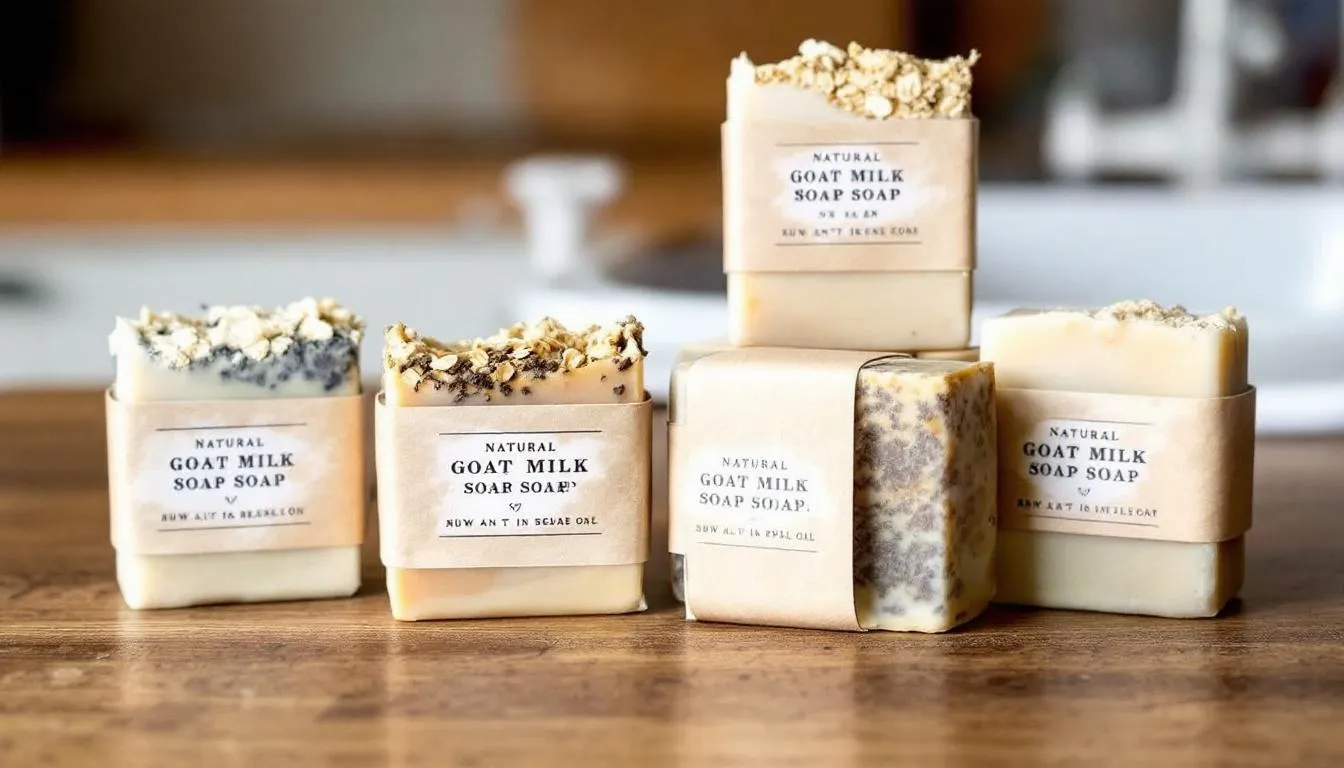
When evaluating products, look for certifications such as USDA Organic, Leaping Bunny cruelty-free, and dermatologist-tested labels. These certifications provide additional assurance about ingredient quality and testing protocols, though they don’t guarantee compatibility with your specific skin needs.
A price comparison reveals significant variation in the market, with artisanal soaps typically ranging from $8 to $15 per bar, while commercial brands range from $3 to $6. The higher cost of artisan products often reflects superior ingredient quality, smaller batch production that preserves nutrients, and more meticulous attention to formulation details, which benefit sensitive skin.
Unscented Formulations: Safest Choice for Sensitive Skin
For individuals managing Rosacea, unscented goat milk soap formulations represent the safest starting point. Essential oils and synthetic fragrances trigger approximately 60% of rosacea flare-ups, making complete fragrance avoidance a crucial strategy for many sufferers.
Recommended brands specializing in unscented formulations include Bend Soap Company, Beekman 1802, and Nubian Heritage, all of which offer unscented lines. These manufacturers focus on preserving the natural benefits of goat milk without adding potentially irritating aromatics or botanicals.
Before incorporating any new soap into your skincare routine, perform patch testing on your inner forearm for 48-72 hours. Apply a small amount of lather, rinse thoroughly, and monitor for any signs of irritation, including redness, stinging, or increased sensitivity. This simple precaution can prevent full-facial reactions that might set back your progress for weeks.
Proper storage maintains soap quality and prevents rancidity, which can irritate sensitive skin. Storep goat milk soap in a dry, cool locatio,n away from direct sunligh. Use a soap dish that allows for air circulation to prevent moisture accumulation, which can promote bacterial growth.
Gentle Scented Options: Natural Additions for Aromatherapy Benefits
If you prefer scented products and have established tolerance for specific ingredients, certain gentle additions can provide aromatherapy benefits without triggering rosacea symptoms. Chamomile-infused goat milk soaps containing German chamomile extract at a concentration of 0.1- 0.3% provide additional anti-inflammatory properties, while imparting a subtle, calming scent.
Oatmeal and honey combinations in goat milk soap provide gentle exfoliation and antimicrobial properties, respectively, helping to address both the textural concerns and bacterial overgrowth sometimes associated with Rosacea. The natural enzymes in honey support skin repai,r while oatmeal providesgentle physical exfoliationsuitableh for daily use. Soothing and anti-inflammatory ingredients, such as oatmeal, shea butter, aloe, and chamomile, can further enhance the calming effects of goat milk soap for Rosacea.
Lavender essential oil, when used at very low concentrations (0.5% or less), can provide stress reduction benefits that may indirectly help manage rosacea symptoms triggered by emotional stress. However, even natural essential oils can cause reactions in individuals who are highly sensitive to them.
Watch for warning signs of sensitivity, including immediate stinging, increased redness that persists longer than usual, or burning sensations during or after use. These reactions indicate that the product contains triggers for your specific skin and should be discontinued immediately to prevent worsening symptoms.
Proper Application Techniques for Maximum Benefit
The way you use goat milk soap can be just as important as the soap itself. Proper application techniques maximize therapeutic benefits while minimizing the risk of inadvertent irritation that could trigger rosacea flare-ups.
Water temperature plays a crucial role in preventing vasodilation that worsens redness. Use lukewarm water, which is between 85°F and 90°F, feeling neither hot nor cold to the touch. Hot water increases blood flow to facial vessels, immediately intensifying the redness and inflammation characteristic of Rosacea, while cold water can cause uncomfortable tightness in already sensitive skin.
Apply goat milk soap using only your fingertips, avoiding washcloths, exfoliating tools, or rough towels that can cause micro-trauma to delicate skin. Create a gentle lather in your palms first, then apply using light circular motions, allowing the soap to remain in contact with your skin for 30-60 seconds. To use goat milk soap effectively, wash your face with lukewarm water, lather gently, and rinse thoroughly without scrubbing. This duration provides sufficient cleansing action without over-drying or stripping the skin of essential oils.

Immediately after skinning, pat dry with a clean, soft towel using gentle pressing motions rather than rubbing. Apply moisturizer within 3 minutes of washing to lock in hydration and support the skin barrier repair that goat milk soap promotes. This timing takes advantage of the skin’s increased permeability immediately post-cleansing.
Morning vs. Evening Routines: Timing Considerations
Your morning skincare routine should focus on protection and preparation for the daily environmental challenges you face. Use goat milk soap once, followed immediately by a broad-spectrum SPF 30+ sunscreen, to prevent UV-triggered flare-ups. The gentle cleansing action removes overnight oil accumulation without stripping the protective barriers you need for daytime defense.
Evening routines can accommodate more intensive cleansing if needed, particularly if you wear makeup or sunscreen that requires thorough removal. Consider a double cleanse approach using an oil-based cleanser first to dissolve makeup and sunscreen, followed by goat milk soap to remove any remaining impurities while delivering therapeutic benefits overnight.
Frequency recommendations vary depending on the severity of Rosacea. Those with mild symptoms may benefit from once-daily use, typically in the evening, while moderate cases often respond well to twice-daily application. Monitor your skin’s response and adjust accordingly, as over-cleansing can trigger increased sensitivity even with gentle products.
Seasonal adjustments help maintain optimal results throughout the year. During the winter months, increased moisturizing and reduced cleansing frequency may be necessary to prevent over-drying in low-humidity environments. Summer humidity might allow for slightly more frequent cleansing, but maintain gentle techniques regardless of seasonal variations.
Integration with Medical Treatments
Goat milk soap integrates well with most prescription rosacea treatments; however, timing and application order are crucial for optimal results. When using prescription topicals like metronidazole gel, azelaic acid, or oral antibiotics, allow a 30-minute gap between cleansing and medication application to ensure proper absorption and prevent dilution of active ingredients.
Avoid combining goat milk soap with retinoids or chemical exfoliants during initial treatment phases, as the combination of multiple active ingredients can overwhelm sensitive skin. Once your skin has adjusted to prescription treatments, a gradual reintroduction of gentle exfoliating products may be possible under a dermatologist's supervision.
For severe rosacea cases (grade 3-4), consult with a dermatologist before making significant changes to your skincare routine. While goat milk soap offers gentle benefits, severe cases may require specialized medical treatment that should be established before adding complementary therapies.
Document your skin’s response to treatment combinations using photos and a symptom severity scoring system. This information helps both you and your healthcare provider optimize your treatment plan and identify the most effective combination of medical and natural therapies for your specific needs.
Comprehensive Goat Milk Skincare Regimen for Rosacea
Building an effective skincare routine extends beyond choosing the best soap to include coordinated products that work together to manage rosacea symptoms. A comprehensive approach addresses cleansing, hydration, protection, and repair using goat milk products and complementary formulations.
Budget considerations for a comprehensive goat milk skincare regimen typically range from $45 to $ 80 monthly for quality products, significantly less than many prescription alternatives, while offering gentle, natural ingredient profiles. This investment covers cleanser, toner, serum, moisturizer, and sunscreen, specifically designed to maintain healthy skin affected by Rosacea.
Timeline expectations help set realistic goals for improvement. Initial benefits often appear within 1-2 weeks as skin barrier function improves and inflammation begins to subside. Significant results typically develop over 6-8 weeks as cellular turnover cycles are completed and the cumulative anti-inflammatory effects become established.
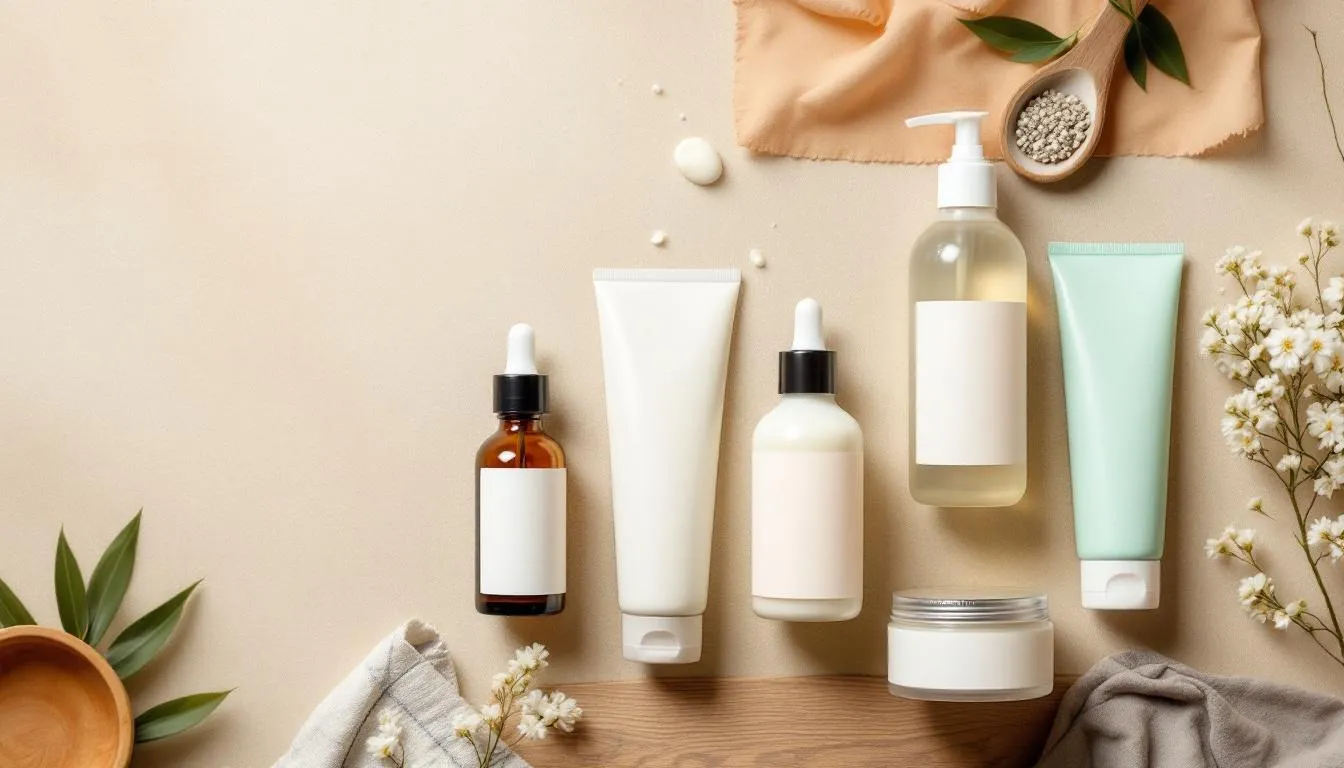
Progress tracking methods include weekly photo documentation using consistent lighting and angles, as well as daily symptom severity scoring on a 1-10 scale for redness, burning, and overall comfort. This systematic approach helps identify patterns, trigger avoidance strategies, and optimal product combinations for your individual needs.
Goat Milk Moisturizers and Serums
Goat milk lotion, formulated with hyaluronic acid, provides lightweight daytime hydration without the greasiness that can trap heat and exacerbate rosacea symptoms. Look for products containing 2-3% hyaluronic acid combined with goat milk proteins for optimal moisture retention without pore-clogging ingredients.
Rich nighttime creams containing ceramides and peptides support overnight skin repair when natural healing processes are most active. These formulations should feel more substantial than daytime products, providing intensive barrier repair and anti-inflammatory benefits while you sleep.
Goat milk serums with niacinamide (5%) offer additional anti-inflammatory benefits that complement the natural compounds found in goat milk soap. Niacinamide reduces redness, regulates oil production, and strengthens barrier function, making it an excellent addition to rosacea management routines.
Application techniques for goat milk products involve gentle upward massage using fingertips, avoiding the delicate eye area and any zones of active inflammation. Allow each product to absorb fully before applying the next layer, typically waiting 2-3 minutes between applications to prevent product interference.
Weekly Treatment Options
Goat milk bath soaks offer a full-body treatment for individuals whose Rosacea extends beyond the facial area. Add 1 cup of powdered goat milk to warm bath water and soak for 15-20 minutes to deliver anti-inflammatory benefits to larger skin areas while promoting overall relaxation that can help manage stress-related triggers.
DIY goat milk masks, which combine fresh goat milk with oatmeal and honey, create intensive treatment options for particularly challenging periods. Apply this mixture for 10-15 minutes once weekly, focusing on areas of persistent redness or irritation. The combination provides gentle exfoliation, antimicrobial action, and deep hydration.
Professional treatments, including goat milk facials, are increasingly available at dermatology clinics and medical spas that specialize in sensitive skin conditions. These treatments often combine goat milk with other gentle, anti-inflammatory ingredients under the guidance of a professional for enhanced results.
Contraindications for intensive treatments include avoiding masks or prolonged contact during active flare-ups or when open lesions are present. These treatments are most effective during a stable period, as they prevent overwhelming already irritated skin. They should be discontinued if any increase in sensitivity occurs.
Common Mistakes and How to Avoid Them
Even with the gentlest products, improper use can sabotage your efforts to manage rosacea symptoms effectively. Understanding common mistakes helps you avoid setbacks and maintain steady progress toward clearer, more comfortable skin.
Over-cleansing represents one of the most frequent errors, even with gentle soap formulations. While goat milk soap is significantly less harsh than conventional options, using it more than twice daily can still compromise barrier function and increase sensitivity. Stick to using the product once or twice daily, regardless of how gentle it feels.
Using hot water remains tempting, especially during cold weather, but temperatures above 90°F cause immediate vasodilation, which worsens redness and can trigger prolonged flare-ups. Train yourself to test water temperature with your wrist before washing your face, ensuring it feels neutral rather than warm.
Aggressive scrubbing or the use of exfoliating tools can damage compromised skin and cause micro-trauma, leading to increased inflammation. Even with the natural exfoliating properties of lactic acid in goat milk soap, physical manipulation should remain gentle and brief. Harsh physical exfoliants, such as scrubs with crushed nut shells, can cause microtears and inflammation, making them unsuitable for rosacea-prone skin.

Mixing too many new products simultaneously makes it impossible to identify which ingredients help and which might trigger adverse reactions. Introduce one new product at a time, allowing 2-3 weeks to evaluate its effects before adding additional items to your routine.
Discontinuing use too early prevents you from experiencing the full benefits that develop over 4-6 weeks of consistent use. Initial mild adjustment reactions often resolve within the first week, and significant improvements typically become apparent with sustained use.
Recognizing and Managing the Initial Adjustment Period
Typical adjustment symptoms during the first 3-5 days may include mild tingling or slight dryness as your skin adapts to new pH levels and active ingredients. These temporary effects usually resolve quickly as barrier function improves and inflammation subsides.
Warning signs requiring immediate discontinuation include severe burning, blistering, or spreading rash that extends beyond the application area. These reactions indicate true sensitivity or allergy and require immediate cessation of use followed by gentle care using only products you know to be well-tolerated.
Gradual introduction protocols help minimize adjustment reactions while allowing your skin to adapt slowly. Start with every-other-day use for the first week, then progress to daily use as tolerance builds. This approach is particularly suitable for individuals with sensitive skin or a history of allergic reactions to skincare products.
Emergency care for acute reactions includes immediate application of cool compresses and the use of fragrance-free moisturizer to help calm inflammation. Avoid using any additional active ingredients until the reaction has completely subsided. Consider consulting a dermatologist if symptoms persist for more than 48 hours or worsen despite discontinuing the product.
FAQ
How long does it take to see results from goat milk soap for Rosacea?
Most people notice initial improvements within 1-2 weeks of consistent daily use, including reduced stinging and improved skin comfort. Significant visible results, such as decreased redness and fewer inflammatory bumps, typically develop over 6-8 weeks as the skin barrier strengthens and anti-inflammatory effects accumulate. The timeline varies based on the severity of Rosacea, the effectiveness of trigger management, and the consistency of the overall skincare routine.
Can I use goat milk soap if I have both Rosacea and acne?
Yes, goat milk soap can benefit both skin conditions simultaneously. The natural lactic acid provides gentle exfoliation that helps prevent clogged pores, while the anti-inflammatory properties address both acne inflammation and rosacea symptoms. However, avoid combining goat milk soap with harsh acne treatments, such as benzoyl peroxide or salicylic acid, initially, as this combination may over-dry sensitive skin. Is goat milk soap safe during pregnancy and breastfeeding? What's suitable for rosacea treatment?
Goat milk soap is generally considered safe during pregnancy and breastfeeding since it contains only natural ingredients without synthetic chemicals or medications. However, hormonal changes during pregnancy can increase skin sensitivity, so patch testing becomes even more critical. Consult your healthcare provider if you have concerns about any skincare changes during pregnancy, especially if you’re also using prescription rosacea treatments.
What’s the difference between fresh goat milk soap and powdered goat milk soap for Rosacea?
Fresh goat milk soap typically retains higher levels of vitamins, enzymes, and proteins that benefit rosacea-prone skin, as these nutrients can be degraded during the processing of powdered milk. However, powdered goat milk soap offers a longer shelf life and a more consistent formulation. Both can be effective for managing Rosacea, but fresh goat milk formulations may offer superior anti-inflammatory and moisturizing properties for sensitive skin.
Can children with Rosacea safely use goat milk soap?
While Rosacea is uncommon in children, those who do develop it can generally use goat milk soap safely under the guidance of a pediatric dermatologist. Children’s skin tends to be more sensitive than adult skin, so start with very gentle application every other day and monitor carefully for any signs of irritation. Always consult a pediatric dermatologist for proper diagnosis and treatment recommendations before beginning any new skincare regimen for children.





